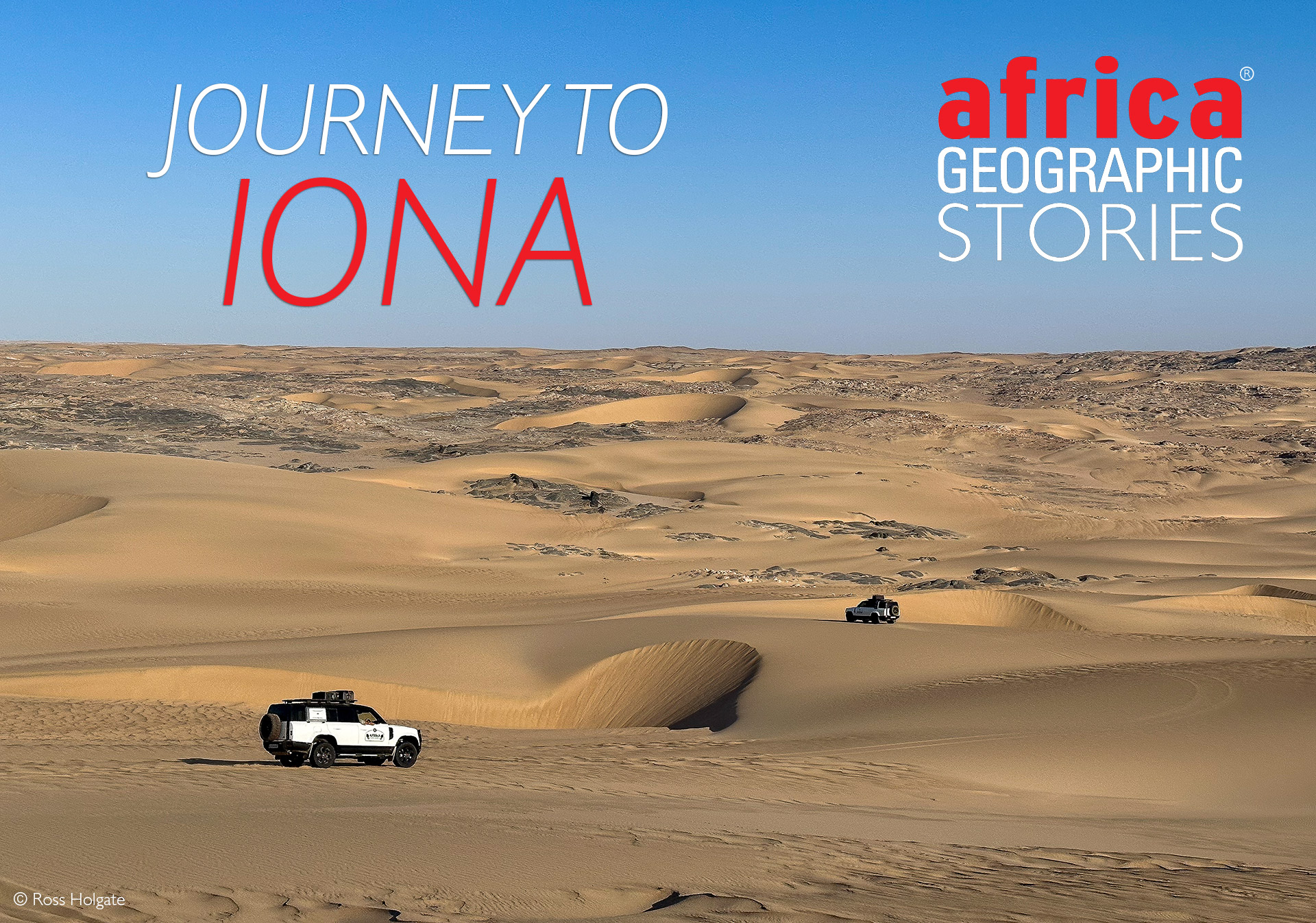
Kingsley Holgate's Afrika Odyssey expedition


Renowned African explorer Kingsley Holgate and his expedition team from the Kingsley Holgate Foundation recently set off on the Afrika Odyssey expedition – an 18-month journey through 12 African countries to connect 22 national parks managed by African Parks. The expedition’s journey of purpose is to raise awareness about conservation, highlight the importance of national parks and the work done by African Parks, and provide support to local communities. Iona National Park in Angola is one of the first stops on their journey. Sheelagh Antrobus shares news from the road.
Follow the journey: see stories and more info from the Afrika Odyssey expedition here.

The Iona challenge
Our first Afrika Odyssey challenge is to cross the continent from the Indian Ocean in the east to where the Kunene River pours into the Atlantic Ocean, and reach the first park on our list: Iona National Park in the southwestern corner of Angola.
In the southern city of Lubango, we meet up with Brad Hansen (veteran of many past expeditions and an ambassador for African Parks) and Ken Wilcox. Ken is the patron of this Iona leg of the expedition, and in support is the larger-than-life Angolan character Stefan van Wyk and his crew of Raol, Fernando and Paulo.
Spirits are high as the adventure begins on the granite cobblestone road to the Tundavala Gap on the rim of Angola’s central plateau. The plateau’s awe-inspiring abyss abruptly drops 1,000 metres, providing endless views over far pavilions of jagged mountains and vast plains stretching down to the Namib Desert and the cold South Atlantic coast beyond.
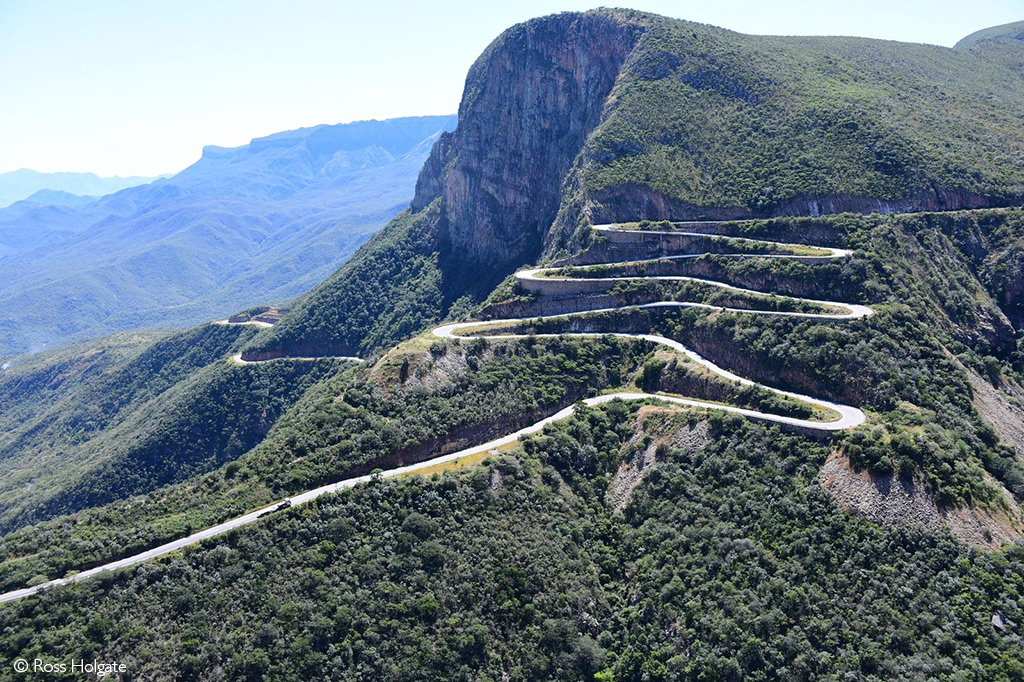
The big, heavily loaded expedition Land Rover Defender 130s expertly handle the dangerous hairpin bends of the Serra da Leba pass that twists and turns through several climatic zones down to the plateau below, its steep retaining walls covered in colourful graffiti. And then, down on the coast, the pastel shades of the old Portuguese houses mark the port town of Mossamedes.

Here, we’re joined by the African Parks team of Leon Lamprecht (regional operations manager), Iona park manager Pedro Monteroso and new conservation manager Dan van de Vyver – all determined to resurrect and protect Iona. Their enthusiasm is infectious, and they exhibit the same grit and determination as the ancient Welwitschia mirabilis that dot this desert landscape, across which we’re going to zigzag. Stefan leads us to one of the oldest and biggest welwitschias – as large as the Defenders – surrounded by hyena tracks. This ancient, leathery desert plant is reputed to grow only a few millimetres a year and lives for a thousand years or more. We set up a wild camp with the golden glow of the setting sun reflecting off massive sandstone outcrops. We are surrounded by cliffs softly lit by the spotlight from Stefan’s camp kitchen.

An expedition is born
It’s great to see Leon again. We had first met when he was managing Zakouma National Park in Chad, where we had shared many a campfire. This was when we first became fascinated by the success story of African Parks and their ability to resurrect, manage and protect vast tracts of African wilderness, sometimes against seemingly impossible odds. It’s a conservation miracle. In Zakouma, we had met rangers and the tough, experienced anti-poaching units. We learned how, in partnership with the government and local communities, they had stopped the mass elephant poaching in Zakouma by the Janjaweed (the feared ‘devils on horseback’) from neighbouring Sudan.
It was then we decided that one day if the ‘Zen of Travel’ was on our side, we would undertake a journey of hope for Africa’s wildlife by connecting all 22 African Parks-managed areas across the continent. It’s great when a plan comes together. Four years later, we are on this exciting Afrika Odyssey expedition.

Hope and change in Iona
In the morning, with the expedition map stretched out on the Defender bonnet and using the Zulu Talking Stick, Pedro points out what lies ahead across the vast plains, dry riverbeds, rocky mountains and the track down to Foz du Cunene and the Atlantic Ocean.
Crossing into Iona National Park, there’s not another tourist in sight – just us on this journey of discovery. Iona was proclaimed a reserve in 1937 and was upgraded to a national park in 1964. However, as is true for most Angolan parks, the Civil War significantly disrupted the area. Poaching and the destruction of infrastructure have also caused considerable damage to the once-rich park. But now, there is hope and change.
It’s a race against the setting sun to meet ‘Platoon Two’ from the Himba community. They recently passed a stringent training programme to become the eyes and ears of the reaction force that is, under African Parks, bringing new energy and professional management to this area of well over a million hectares – making the rebirth of Iona a recipe for success, just like we had already seen at Zakouma.
We fill up with fuel and water at AP’s Forward Operations Base Camp at Esphinheira. The two original rondavels that had been the park headquarters in the days of Portuguese occupation remain, but now the camp buzzes with activity. In the control room, Leon uses a pointer and maps to show us what it’s taking to resurrect Iona: staff and vehicle movements, water, fuel, supplies, weaponry, personnel, and anti-poaching units. Such control rooms exist in all 22 African Parks stretched across the continent and are at the very heartbeat of the professional management that African Parks brings to the gold standard of running conservation at scale.
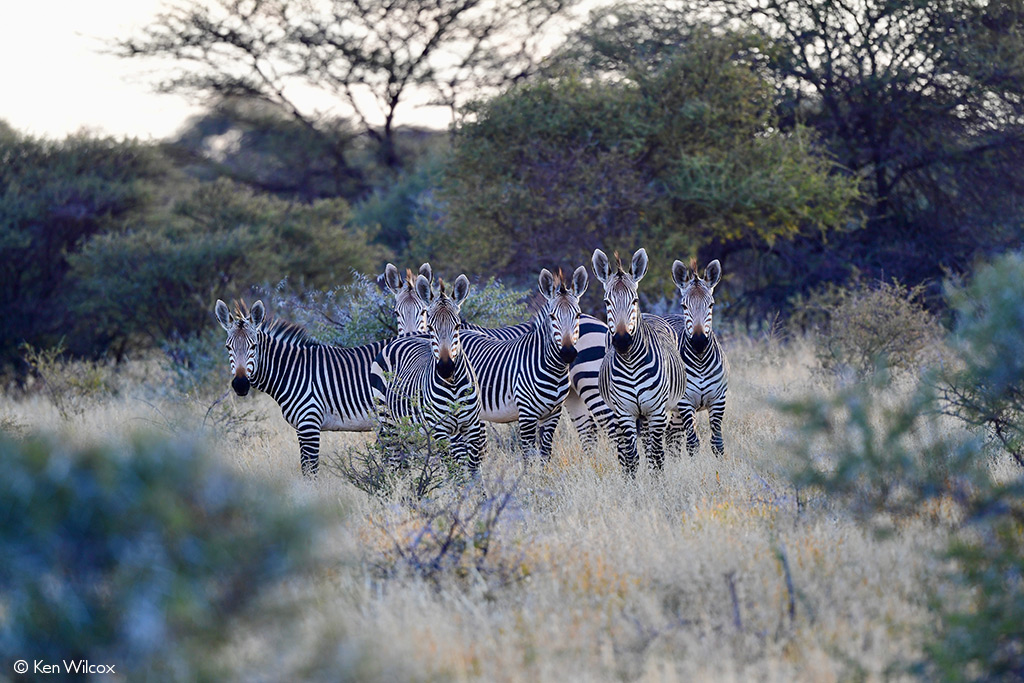
Art and glasses
But our visit to Iona is about more than wilderness. It also includes doing community work with the African Parks team. We’ll long remember judging a vibrant, educational wildlife art competition – the kids’ smiles, how beautifully the girls are dressed in their traditional colours. We’ll also remember the delight on the crinkly faces of the elderly at the gift of reading glasses – all part of using this adventure to add to the quality of the lives of others. In Ken’s words, “It gives me a warm feeling and adds meaning to the journey.”
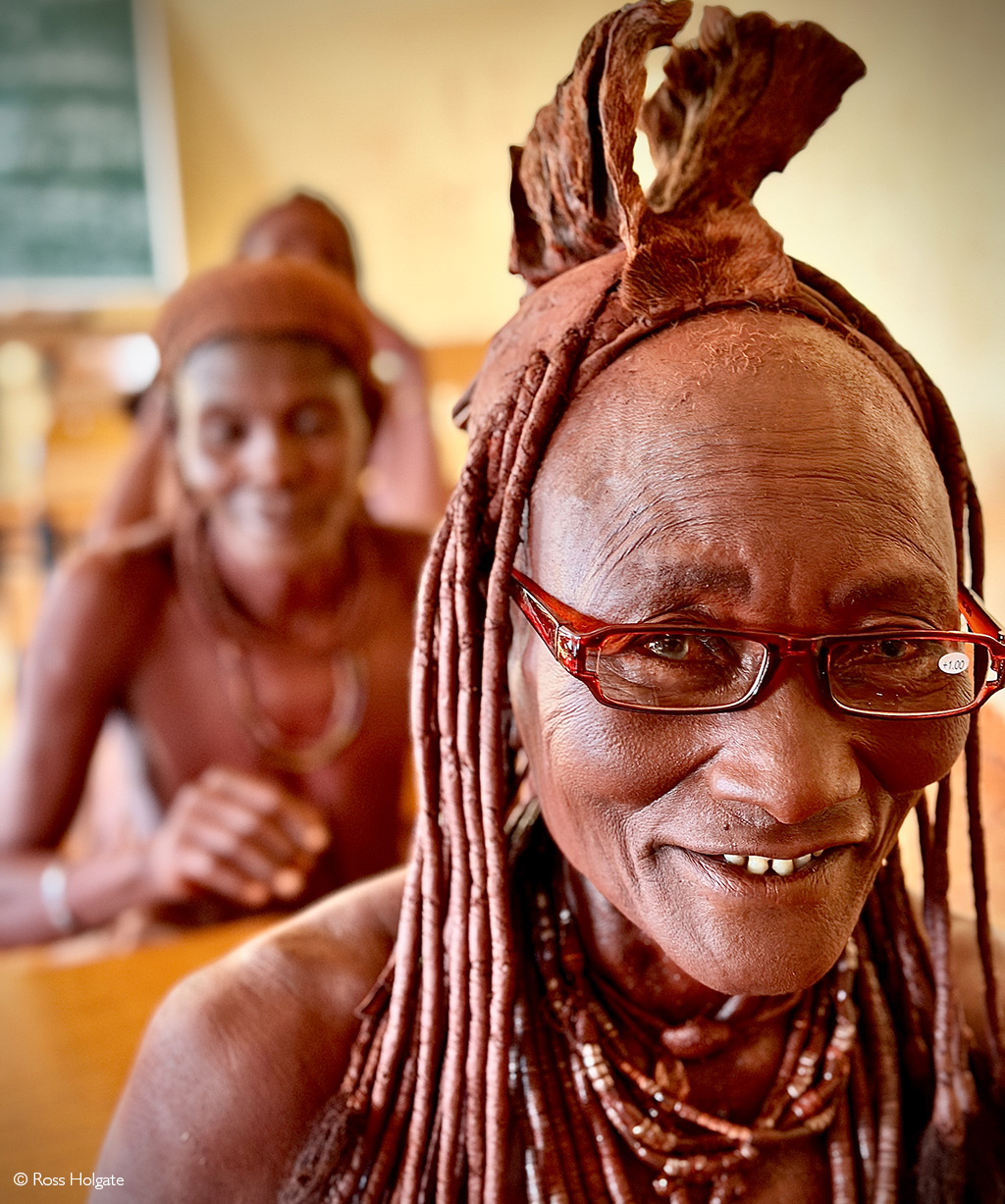
We’ll also remember the delightful interaction with the OvaKuvale, the semi-nomadic pastoralists. Women covered in colourful cloth wear ‘Ompata’ – large, square wooden headdresses. Not forgetting the OvaTwa people, believed to be related to the San-Bushmen, who have been in this area much longer than other tribes.
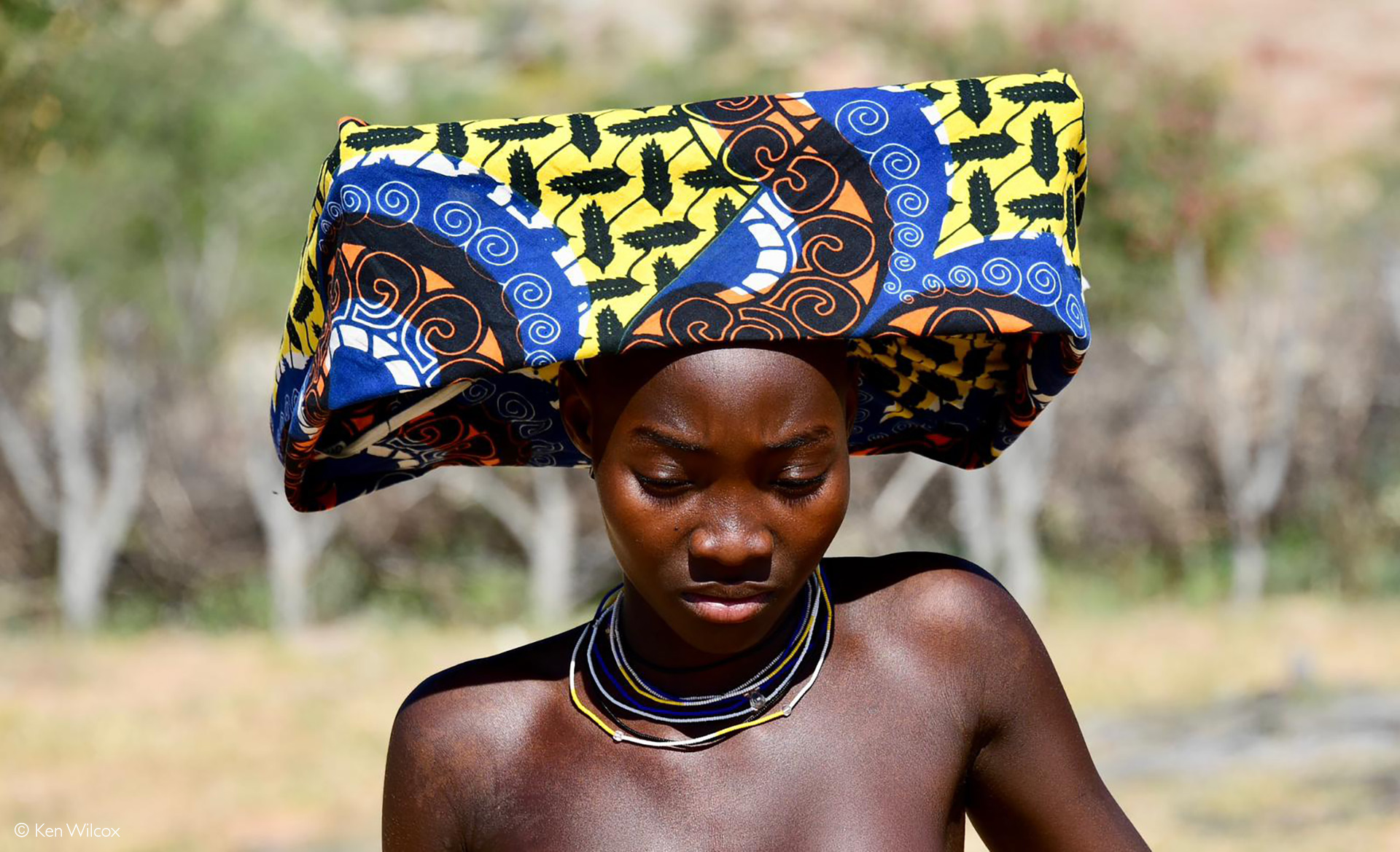
After presenting a homestead with gifts of maize meal, rice and sugar, Stefan explains how the OvaTwa women have adopted the traditional dress of the Himbas, the dominant tribe in the area. Despite their laughter and the kids pulling nervously on Kingsley’s beard, we can see their life is even more of a struggle than others, as they don’t own cattle – the equivalent of currency in this remote, desert region.
On the road again in the heat and the dust, the wreck of an old American Ford sedan on the roadside serves as a reminder of the time when the Portuguese had to pack what few personal belongings they could and make a dash across the desert and use a hurriedly built pontoon bridge to cross the Kunene into the safety of Namibia.
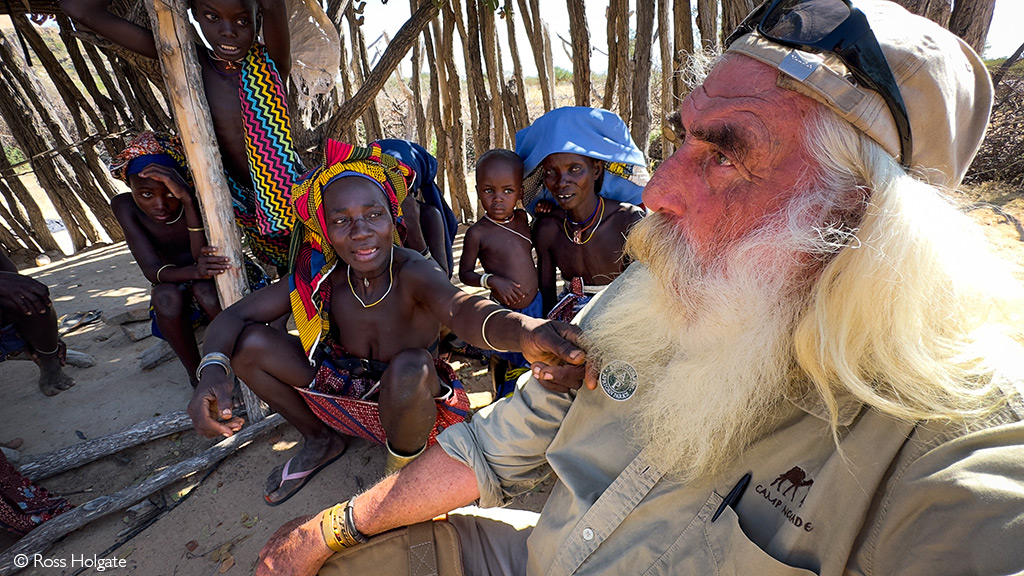

Shifting dunes
We reach the isolated, crumbling police outpost at Foz du Cunene. The cold Benguela Current flows northward along this coast, chilling the air above and producing the fog that is a lifesaver for the fauna and flora of this arid landscape. In the sand, we use a stick to write ‘Foz du Cunene’ and add the first sip-full of water from the Kunene River mouth to the expedition’s symbolic and well-travelled Zulu calabash, to mark the beginning of this Afrika Odyssey.
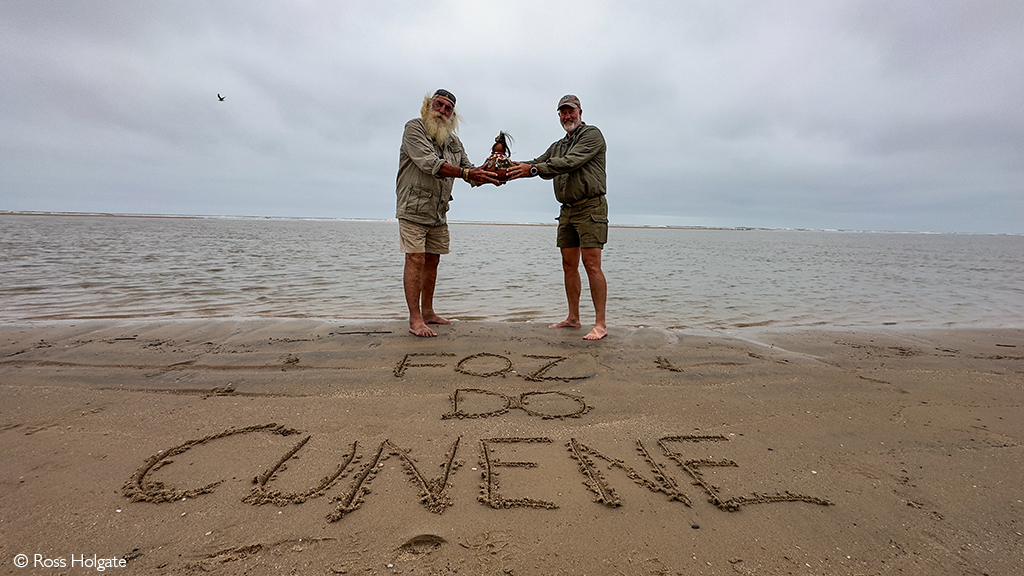
Then, it’s a dash up the coast, racing the incoming tide and an adrenalin rush as Ross Holgate, Kingsley’s son, leads us across the high, shifting dunes of the most ancient desert in the world. What an adventure!
We drop down a steep sand track to camp wild again on the banks of the Kunene, with the backdrop of a towering Namib Desert dune glowing red in the late afternoon light. Across the river is Namibia and the Skeleton Coast National Park, which, together with Iona, makes up 50,000km² of land dedicated to trans-frontier conservation.
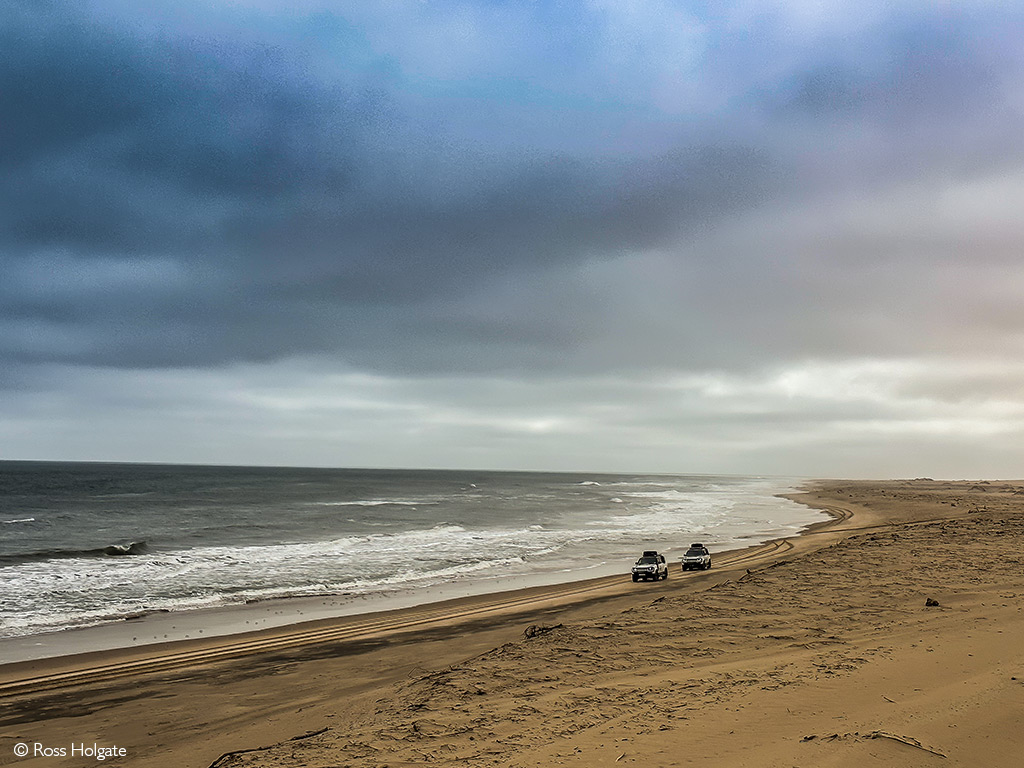
Iona’s raw wilderness
And so, the adventure continues, following a long, single-track slowly zigzagging through dramatically beautiful scenery, Fairy Circles, said to be the largest on Earth and endless green blobs of Euphorbia virosa that survive in the ancient desert dunes of the Namib. The San people used the milky sap – highly toxic to humans – as an arrow poison for hunting, and the only animal able to stomach the plant were the black rhino that used to inhabit these areas. We see ostriches on the move and the occasional springbok, as Leon points out, on the oldest fossilised sand dunes in the world.
True raw wilderness: massive areas of no people, no mobile phone signal, no Wifi, no laptop, no distant car lights, no aircraft flying overhead… just starlit skies, mopane hardwood coals, the sparks disappearing into the night sky. Just us and these magnificent, primaeval landscapes and the ongoing journey below the rugged Serra Cafema Mountains with their zebra-stripe designs as we follow yet another remote track through the Marienfluss.
Further into our Iona journey, Leon shows us rhino “rubbing stones”, shining with age and patina. Some of them could also have been used by elephants and could be thousands of years old. One can imagine the rhinos of the past wandering up from the nearby river, rubbing ticks off their thick, tough skins on these ageless rubbing stones. We meet an elderly Soba (Himba chief), Mutili Mbendulu, who, at close to 100 years old, still remembers rhinos at the rubbing stones. Using his hands, he expertly describes what a rhino looks like with its two horns and snorting character and clearly remembers features of the big, grey-coloured elephants – how softly they walked on their large, padded feet, flapping imaginary ears and mimicking how they used their trunks. “And then they were all gone,” he says sadly. Victor Agostinho (Iona’s community officer) translates as Leon gently explains that one day, these great animals may return so that the Soba’s grandchildren can see them.
 DID YOU KNOW that African Parks offers safari camps (lodges and campsites) where 100% of tourism revenue goes to conservation and local communities? Find out more and book your African Parks safari.
DID YOU KNOW that African Parks offers safari camps (lodges and campsites) where 100% of tourism revenue goes to conservation and local communities? Find out more and book your African Parks safari.
At the village of Kuroko in the buffer zone south of Iona, the local government administrator and staff endorse the expedition’s Scroll of Peace and Goodwill (which is signed with messages from well-wishers along the journey). We follow this with malaria educational work at the district hospital and outlying villages with the support of the Iona community leadership team. Malaria is rife in this area, so pregnant women, and moms with young children, receive long-lasting, insecticide-treated mosquito nets.
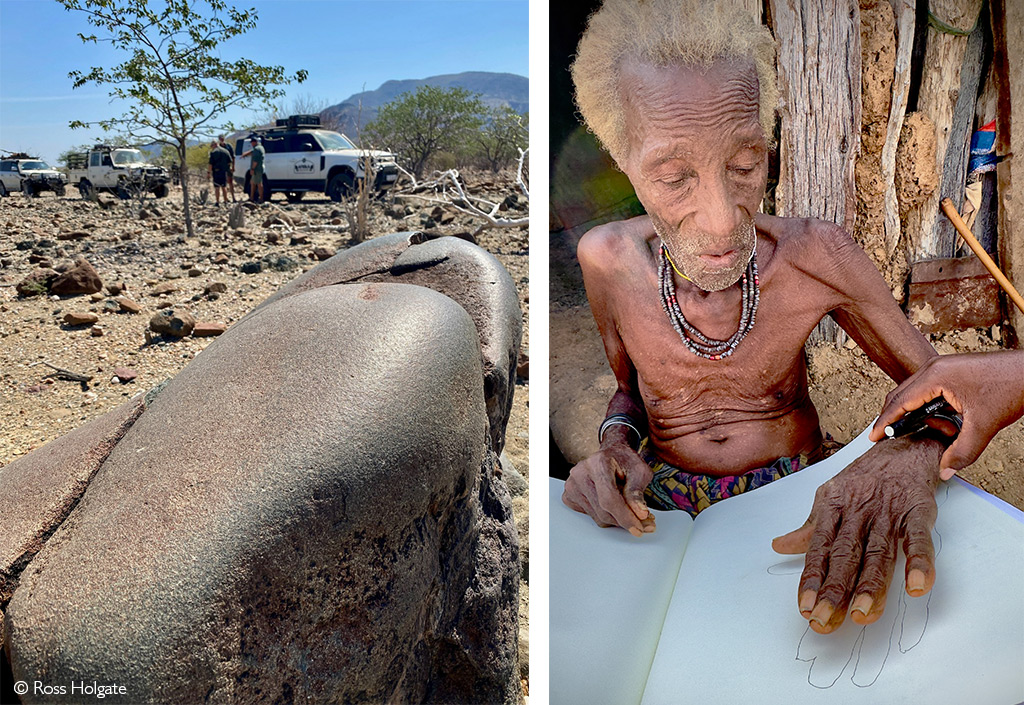

Wild freedom in Iona
What we’ll all remember about this journey to Iona is the freedom of it all. Our last two nights were wild camping in a mopane grove, and at last light, the smell of freshly slaughtered goat meat being cooked down on the dry riverbed. We’ll remember Chicipissa, the Himba drummer and his yellow plastic container of Canjombe self-brew. We’ll remember the dance of the Himba ladies with red mud ringlets in their ornate hair, the gleam of their red-ochred bodies shining in the firelight and the twirls and the laughter of the girls who so value their traditions.
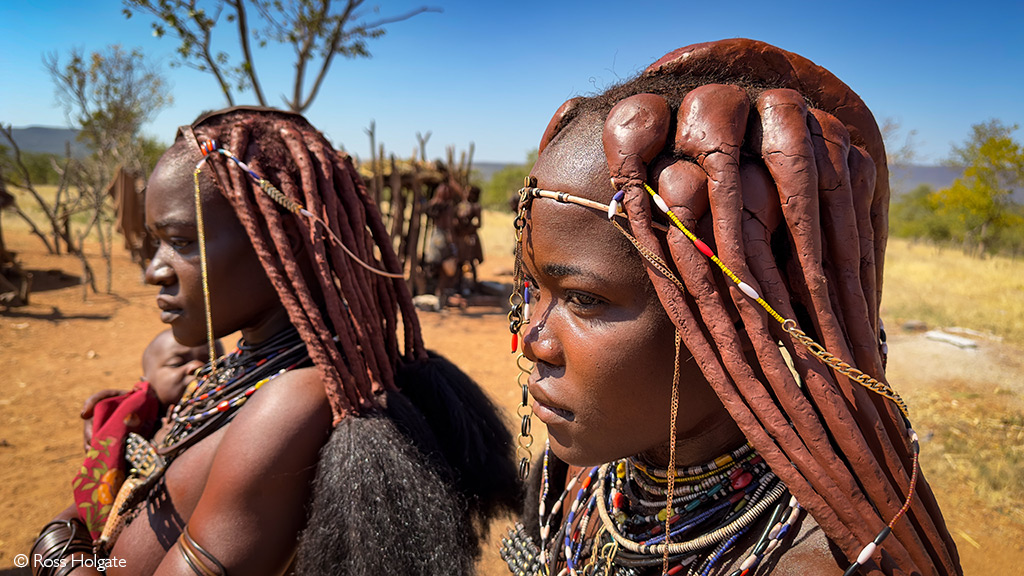
Then it’s a race to the border post at Ruacana to cross back into Namibia. Not an official in sight – just some Himba girls in full traditional dress. Finally, the friendly official arrives – down comes his exit stamp with a smile and a thud. And then, on the Namibian side, the rubber snake in the Defender glove box frightens the rather officious Customs official who, fortunately, once she had recovered, saw the fun of it all.
This expedition quest to Iona was a magnificent journey of hope for the future of Angola’s largest national park. Thank you and Muinto Obrigado to all involved in this exciting first chapter of an Odyssey to link all African Parks across the continent.
Ken’s handwritten note in the expedition’s Scroll of Peace and Goodwill for Conservation says it all:
“I would like to thank the Kingsley Holgate expedition team and African Parks for inviting me to participate in this historic expedition across the stunningly beautiful lands of southwestern Angola and the ancient Namib Desert. I have felt honoured to share in this quest for preserving and conserving wilderness lands, wildlife and ancient indigenous cultures and wisdom across 12 countries, 22 parks and over 22 million hectares of land under African Parks management. It is such a privilege to be able to contribute to the success of these efforts. All the Best!” – Kenneth D Wilcox

Bush note for adventurers
A visit to Iona is an excellent extension to a 4×4 overland adventure – especially if you’ve travelled up through Namibia and want to add a true feeling of wilderness to your journey. Angola should no longer be referred to as ‘war-torn’. It has shrugged off its past and is upbeat, optimistic and welcoming. In time, guides will be available to lead adventurers through the infamous Z gap. By visiting Iona, you will be helping to make a difference in resurrecting and conserving the area. Don’t delay – a great adventure awaits you!
Resources
Read about the return of Angolan giraffe to Iona National Park here.
Inspired to head out on your own African safari adventure? Check out these safari experiences here.
To comment on this story: Login (or sign up) to our app here - it's a troll-free safe place 🙂.![]()






